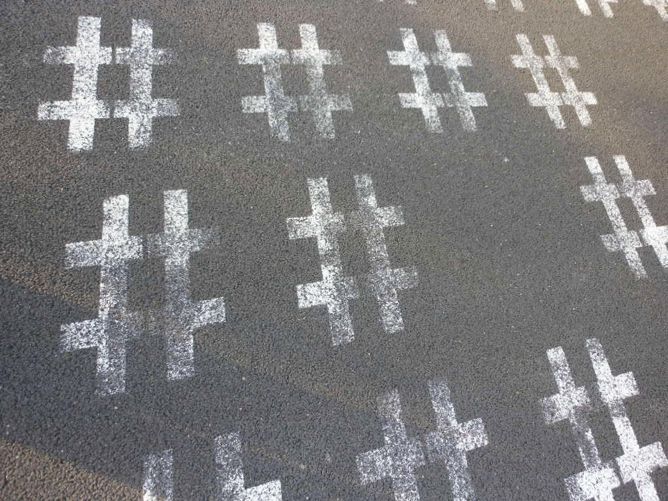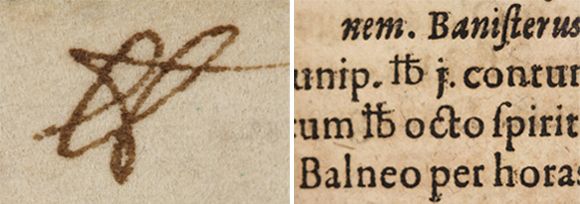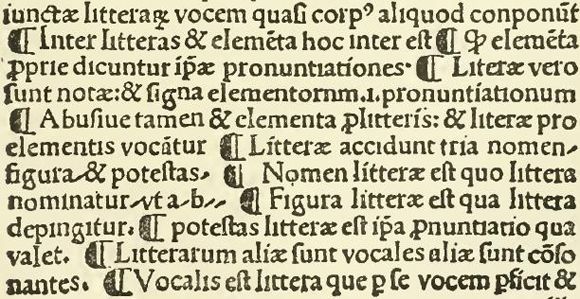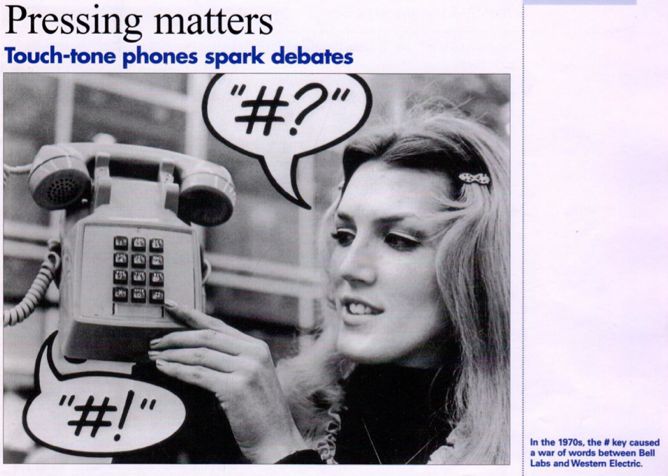The Many Meanings of the Hashtag (It Represents Lumber Yards on Swedish Maps)

Courtesy of Michael Coghlan/Flickr
Roman Mars’ podcast 99% Invisible covers design questions large and small, from his fascination with rebar to the history of slot machines to the great Los Angeles Red Car conspiracy. Here at The Eye, we cross-post new episodes and host excerpts from the 99% Invisible blog, which offers complementary visuals for each episode.
This week's edition—about the hashtag—can be played below. Or keep reading to learn more.
If you want to follow conversation threads relating to 99% Invisible on social media—whether Twitter, Facebook, Instagram, Tumblr—you know to look for the hashtag #99pi. In our current digital age, the hashtag identifies movements, events, happenings, brands, and topics of all kinds. The “#” didn’t always have this meaning, though. It’s had a few different lives.
The hashtag, as we know it, was born one day in 2007. An early Twitter user named Chris Messina, in anticipation of an event called BarCamp, tweeted out:
how do you feel about using # (pound) for groups. As in #barcamp [msg]?
— Chris Messina™ (@chrismessina) August 23, 2007
“Barcamp” doesn’t really require a hashtag, because if you type “barcamp” (with no space between “bar” and “camp”) into the search box, it’s a specific enough term that you will probably not get too many unrelated hits. But if, say, the event had been stylized “Bar Camp,” a search thereof would also yield results for bars and camps.
The idea was resonant. The “#” was a way to create a clear, super-specific search term. The pound symbol had already pervaded other corners of the Web. Internet Relay Chat used the pound sign to represent chat rooms or conversation “channels”; another social network called Jaiku also had them.
For most people, pound symbols looked strange and new. A subset of true believers stood by the sign, and one Twitter user called it a “hash tag,” hash being the British name for the sign. Eventually, “hash tag” became “hashtag.”
A few months later, in October 2007, a journalist named Nate Ritter was reporting on a wildfire in San Diego, using Twitter to post updates as the story developed. He began related tweets with, “San Diego Fire.” Easy for a human to read, but hard for a computer to sort.
Messina reached out to Ritter and proposed that he use “#sandiegofire.” Then other people looking to find out about the fire would know exactly where to look on Twitter.
This is the moment when everyone realized the power of the hashtag.
Today, the hashtag is a tool used in advertisements, social movements, music videos, memes, TV shows, and in conversation.
In the world outside of Twitter, though, it is still “the number sign.” It has a lot of other uses, too. In chess, it represents a move that results in checkmate. In proofreading, it means a space should be inserted. On Swedish maps, it represents a lumber yard.
Whether called hash, pound, number sign, lumber yard, the symbol traces back to ancient Rome.
Its story starts with the Latin term libra pondo, meaning “pound in weight.” This was abbreviated to “lb,” which we still use. When lb became standard, it was often drawn as ℔, with a little bar across the tops of both letters, just to show that the l and the b were connected. As scribes started writing this sign faster and faster, lb began to morph.

Courtesy of Keith Houston
Over time, the symbol’s meaning started to bifurcate—it was used for the unit pound, and it also started to be used as a number sign. It was important enough to wind up on typewriter keyboards, which helped it survive.

Courtesy of Keith Houston
Fast forward to 1963 and the invention of the touch-tone telephone.
The touch-tone phone used buttons instead of a rotary wheel, so unlike previous phones, the numbers no longer had to be arranged in a circle on the dial.
Bell Laboratories, a research subsidiary of AT&T, experimented with a few different designs for the telephone keypad. They tried arranging the numbers in two rows of five, in a circle, in a cross, and in a step pattern, but they ended up arranging the numbers one to nine in a three-by-three grid, and put zero alone at the bottom center.
In 1968, Bell Labs decided to add keys on either side of the zero. This would make the keypad into a nice, even rectangle and would give users a few more options on a phone menu.
Unlike rotary phones, touch-tone phones allow you to continue to dial after the connection has been made, enabling the new telephone systems, such as automated menus. Additional buttons, they realized, could be handy in this regard. They settled on the asterisk and the number, or pound sign, mostly because they were symbols that they knew computers would be able to recognize and were already on the standard QWERTY keyboard.
AT&T didn’t know what to call the pound-sign button in its manuals.

Courtesy of 99% Invisible
A couple of Bell Labs employees decided to call it an “Octotherp”—a name pretty much pulled out of thin air. (“Octo-” refers to the shapes eight lines that stick out of the sides; “-therp” is completely made up.) Octotherp morphed into “octothorpe”—which, rumor has it, came from someone at Bell Labs changing the name to turn it into a tribute to an Olympic athlete named Jim Thorpe. But no one really knows.
Whatever it ought to be called, Messina chose to use this symbol for collating Twitter searches in 2007 because he wanted a sign that could be input from a low-tech cellphone. He had two options: octothorpe or asterisk. He chose the former. And that is how the pound sign (or number sign, or hash mark, or octothorpe) came into ubiquity on billboards, promotional materials, protest signs, and in your annoying friend’s conversations.
To learn more, check out the 99% Invisible post or listen to the show.
99% Invisible is distributed by PRX.
